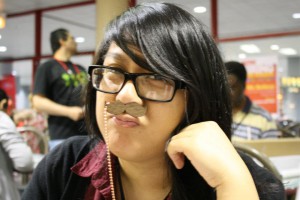written by Maria Isabelle
 Dystopian fiction has long found a home among the canonical halls of literature, but not until recent years have we seen so many offerings within this theme geared toward a young adult audience. Not only are there numerous young adult dystopian novels being written, but many of them don’t stop at just one novel but rather evolve into trilogies that then morph into three or more movies based on their various namesakes. One of the latest films in this phenomenon is The Scorch Trials, the second installment in The Maze Runner series.
Dystopian fiction has long found a home among the canonical halls of literature, but not until recent years have we seen so many offerings within this theme geared toward a young adult audience. Not only are there numerous young adult dystopian novels being written, but many of them don’t stop at just one novel but rather evolve into trilogies that then morph into three or more movies based on their various namesakes. One of the latest films in this phenomenon is The Scorch Trials, the second installment in The Maze Runner series.
While it certainly isn’t a direct, or even at times faithful, adaptation of the second novel in the series, the film nonetheless does justice to the original and is a solid addition to what is planned to be a film trilogy based on the book series. While still recognizable as part of the series, this film departs from its predecessor in making significant changes to the storyline as told in the source material. Some of these changes seem necessary in order to keep the flow consistent, particularly given that the timeline of this film picks up mere minutes after the ending of the last one.
Whether these changes can be considered a good thing or not depends upon who you ask. Critics and fans alike seem divided on this issue, with some bemoaning the lack of character development, apparently sacrificed for more action sequences and a sense of urgency. Others cite a lack of urgency or purpose for the escape across the scorch that results from the significant omission of the experiment’s ‘Phase Two’ plot device that was the whole reason for entering and traversing the scorch in the novel. The film makes no mention of a ‘Phase Two’ or ongoing experiment, but rather has the characters escaping to the scorch in search of a resistance group that opposes WCKD.
The one key issue that most seem to agree upon is that this film may leave some audience members confused, whether fans of the novels or purely viewers of the first movie. This doesn’t seem to bother either lead actor Dylan O’Brien (Thomas) or director Wes Ball, both of whom are on board to complete the trilogy with The Death Cure, set to begin filming within the next few months and slotted for release in early 2017. Both actor and director feel they are telling a solid story that is close to the source material but takes acceptable creative license where necessary to create a stronger film.
Regardless of other concerns, there is no denying that The Maze Runner series, and this installment in particular, provide the social commentary expected from dystopian fiction. In this case, The Scorch Trials emphasizes the devastation of a global environmental disaster and makes clear reference to at least one possible outcome of our neglect to take care of our planet and natural resources. While the devastation in the series is much more suddenly caused by unprecedented solar flares that burn away the majority of the earth’s surface, we can draw parallels to our own erosion of the ozone layer and global warming – issues closely tied to our continued dependency on traditional energy providers versus renewable sources and complacency over our much more gradual climate changes.
Audiences of The Scorch Trials are generally left with more questions at the end of the film, questions that are hopefully to be answered in the third and final installment when it’s done. Changes from novel to movie in this second film will necessarily result in a further departure from source material for the third installment, but director Wes Ball is confident that the end result will be a solid trilogy that can both pay tribute to its source material and stand on its own, as any good film adaptation should.

